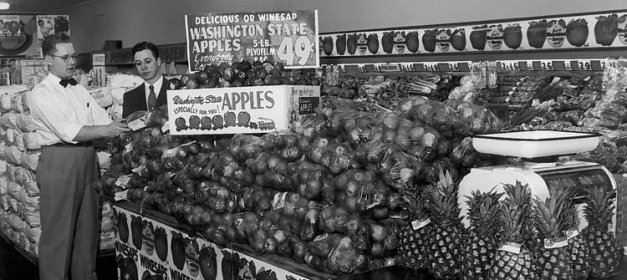Project Description
Crop Management and Pollination
Featured stories about pollination, fruiting and pest management appear in this issue.
Click here to view a PDF version of this issue.
Heed global trends
The global food business is increasingly complex, with new players, new linkages, and cause-and-effect reactions that impact food supply and prices, says Paul Roberts, journalist
Tools growers should be using
To stay in business for the long haul, orchardists must produce exceptional quantities of exceptional fruit. Fortunately, there are many tools available to help growers
Three keys to successful pollination
Queen bees lay eggs singly in cells of the honeycomb. After the eggs hatch, worker bees feed the larvae in the cells and cap them
Safe havens for pollinators
A bumblebee finds nectar in a wildflower planting. PHOTOS COURTESY OF USDA NATURAL RESOURCES CONSERVATION SERVICE Fruit growers across the country will have a chance
Bee Informed Partnership
After five years of annual colony losses near or above 30 percent, beekeepers have settled in for the long haul in their struggle to find
Mechanical thinning of cherries
The Electroflor looked promising for mechanically thinning cherries in tests that Karen Lewis, WSU extension specialist, conducted. After success with mechanical thinning of stone fruit,
The myths of high-alcohol wine
The recent trend of higher alcohol wines is related to winemakers wanting riper fruit so they can produce super-ripe, intense wines to meet market demands,
Cripps Pink is in expansion mode
Lady in Red is one of several highly colored strains of Cripps Pink that will be marketed as Pink Lady. Lady in Red will be
Flavor and quality still paramount
Of all the attributes consumers are looking for today in their food—freshness, organic, local, and sustainable—flavor and quality are still paramount. Growers, shippers, and marketers
Alcohol depresses wine aromas
Ethanol (alcohol) interacts with sensory attributes of wine and can decrease the potency of aromas as the amount of alcohol increases, according to Dr. Carolyn
Gauging apple crop load
When using the Equilifruit, it should fit tightly around the selected limb, about an inch away from the trunk. The F-values on the disk show
High density not for Concords
A Washington State University study found that traditional spacings for juice grapes—around six feet between vines and nine feet between rows—was best of four vine
Easier access to MRLs
Growers using Washington State University’s online Decision Aid System this season will be able to consider pesticide maximum residue limits (MRLs) of top foreign markets
Rise and fall of the apple empire
While Harold Copple managed the Apple Commision between 1947 and 1957, most of the apples produced in Washington were Winesap. During that period, the commission
Cherry research project progresses
WSU engineers are developing a vibrating actuator that will be used with a mechanical harvester to shake limbs and remove fruit without damaging the trees.
Tackle food safety one step at a time
Implementing a food safety program for an orchard might seem overwhelming. But with forethought, planning, and willingness to seek assistance, growers can implement a workable
Organic control for flea weevil
Damage by apple flea weevil. Matt Grieshop Organic apple growers in the Midwest appear to have a relatively simple solution to their problems with apple
EU regulations stifle fruit exports
Pacific Northwest apple and pear exports to Europe have dropped dramatically since pesticide regulations were harmonized among members of the European Union. Restrictive pesticide residue
Export focus is not new
The Washington apple industry was exporting a significant percentage of its crop, long before the Washington Apple Commission was formed. In 1930, seven million boxes,
It’s still a family industry
Consolidation within the Washington apple industry over the years has led to a dramatic drop in the number of growers, says Todd Fryhover, president of











